Abstract
OBJECTIVES. This study examined the prevalences of antibodies to Treponema pallidum, Chlamydia trachomatis, and herpes simplex virus type 2 in a sample of Peruvian adults. METHODS. Among adults seeking health certification in Lima, Peru, 600 were randomly selected to undergo interviews and serologic testing. RESULTS. Men's reported mean lifetime number of partners (10.6) far exceeded women's (1.1), yet antibody to sexually transmitted infection pathogens among sexually experienced participants was 2.8 times more prevalent among women than among men. Among men, female sex workers accounted for 37% of recent partners, and only sex with female sex workers while using condoms less than half of the time was independently associated with antibody (odds ratio = 3.6, 95% confidence interval = 1.5, 8.8). among women, number of partners was associated with any sexually transmitted infection antibody, while intercourse before 18 years of age was associated with C trachomatis antibody. At every level of perceived risk, sexually transmitted infection antibody was more frequent among women. CONCLUSIONS. Men having unprotected sex with female sex workers had the greatest risk of acquiring infections and (by inference) of transmitting them to women.
Full text
PDF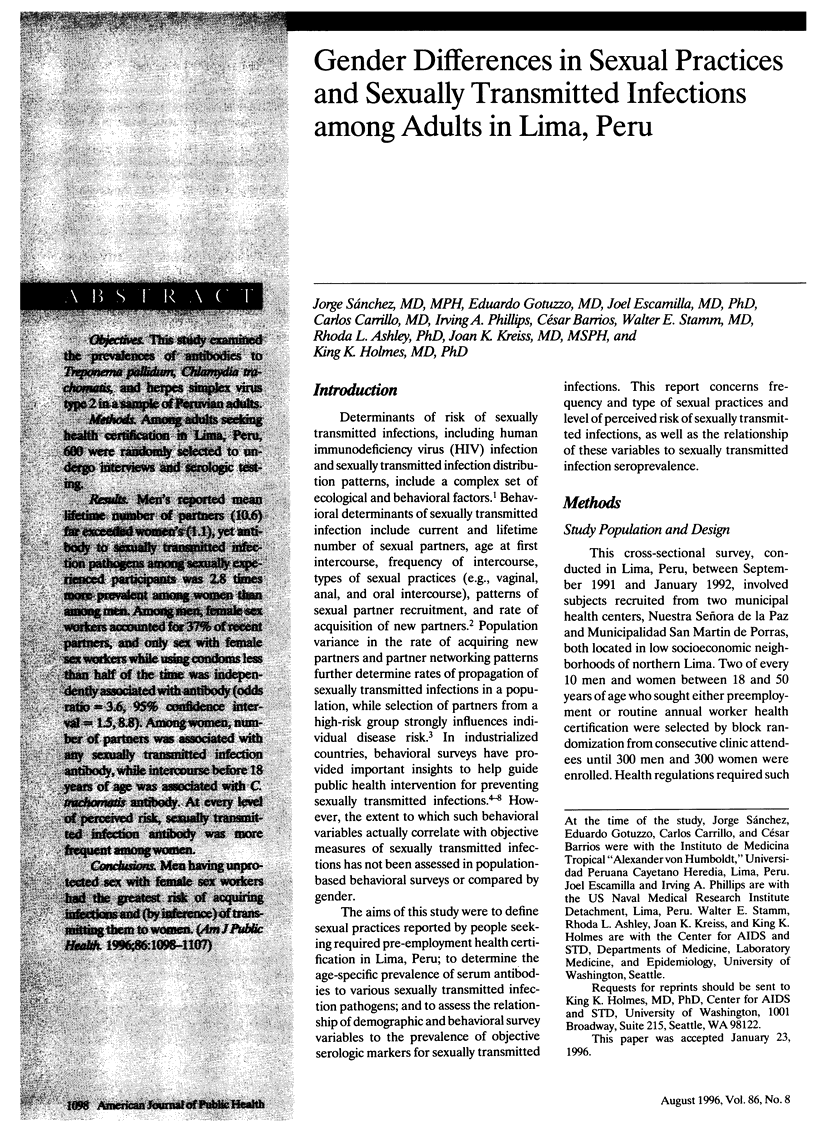
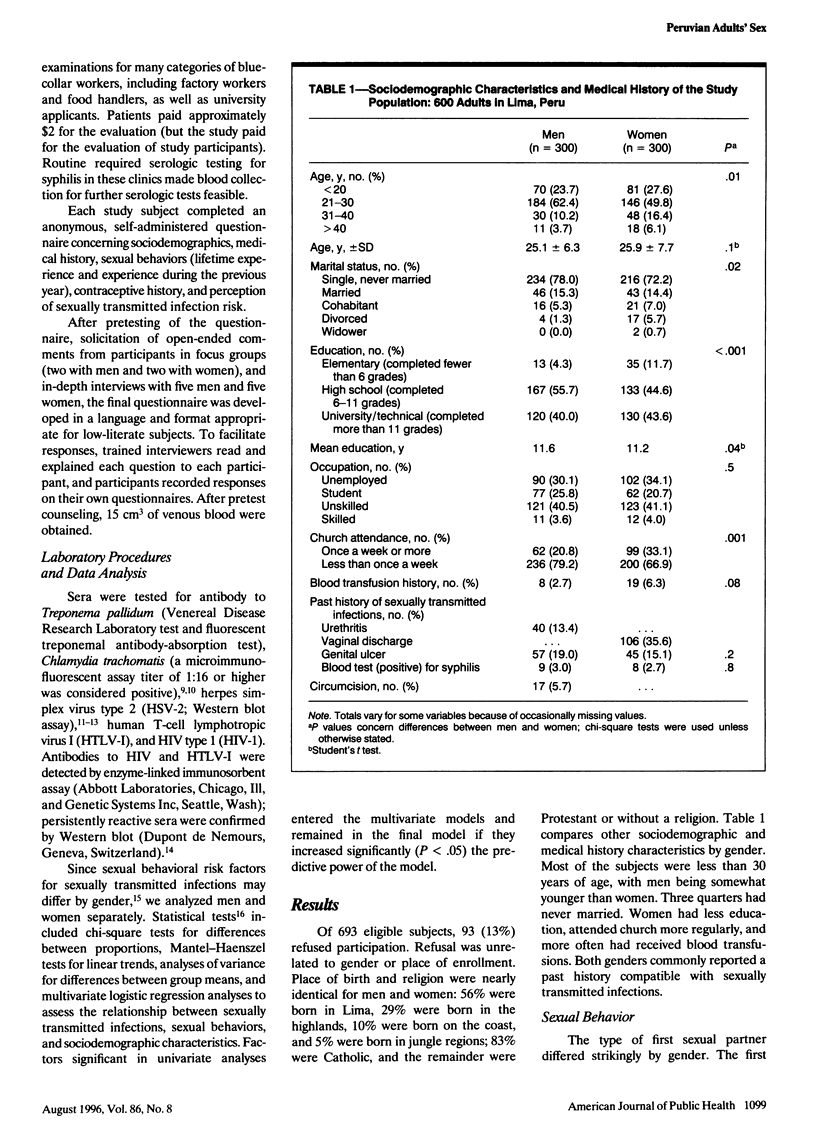
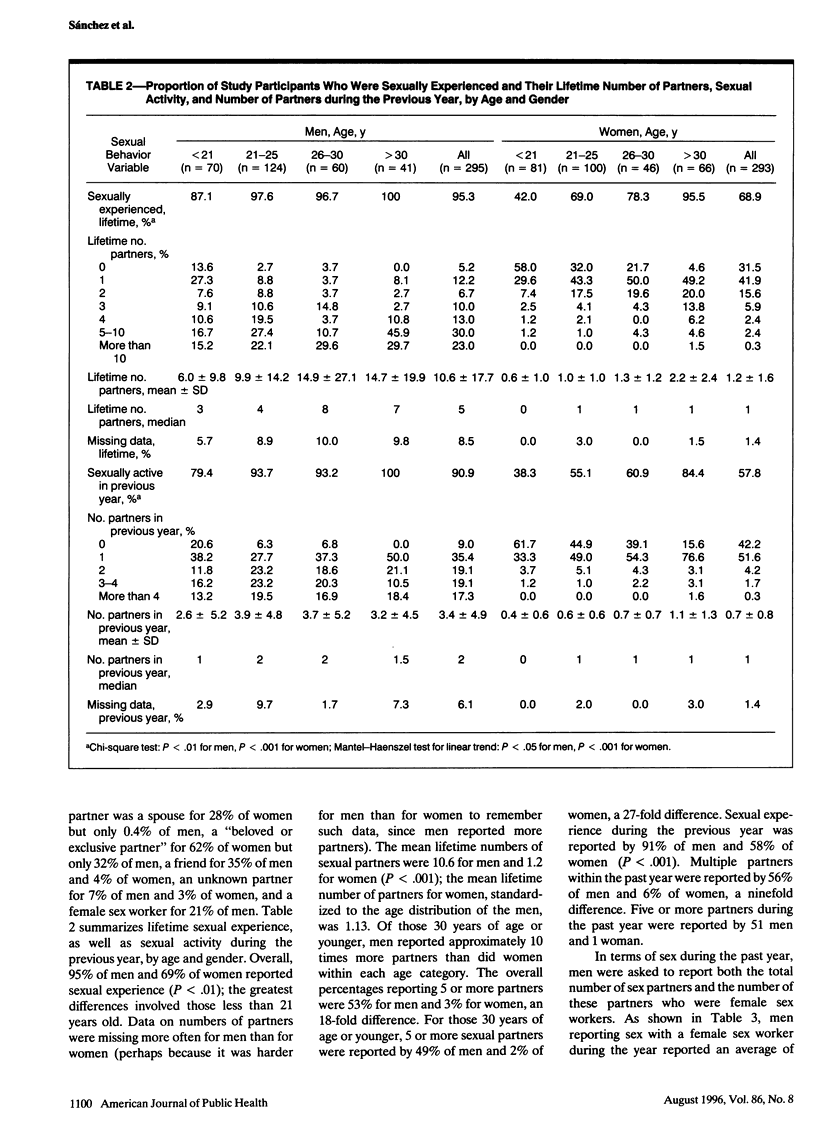
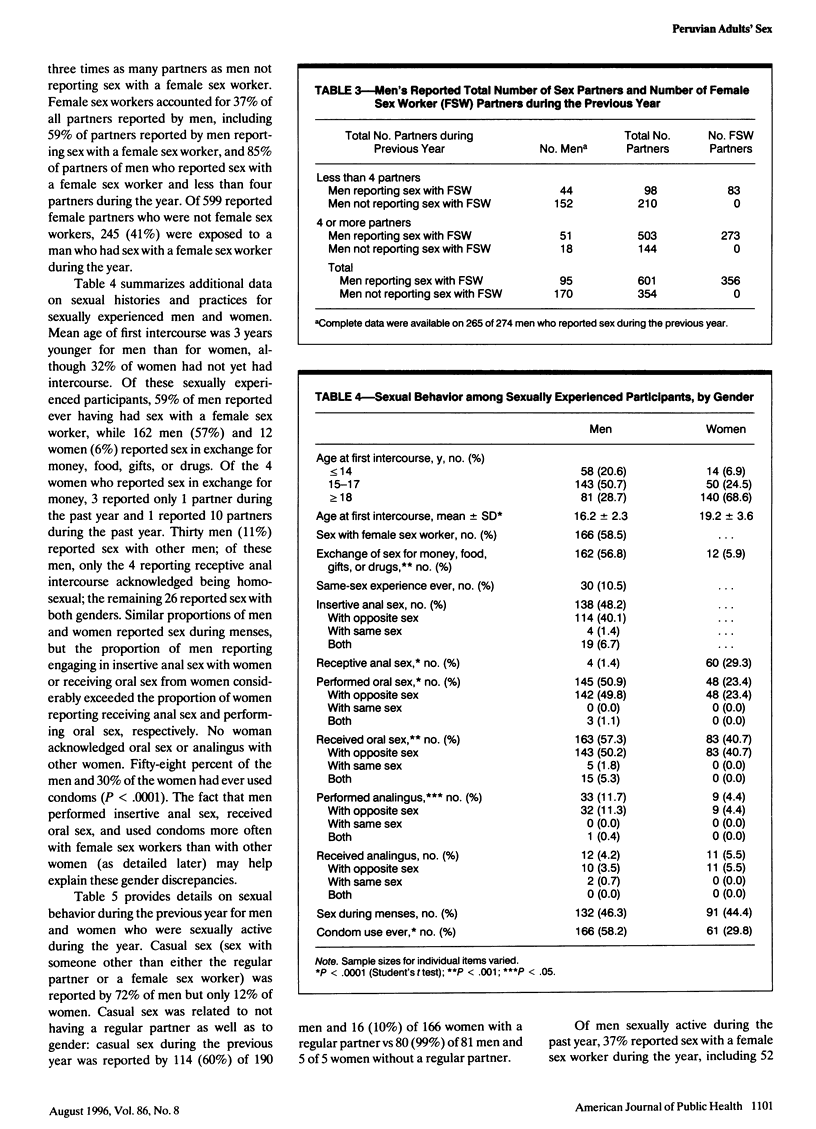
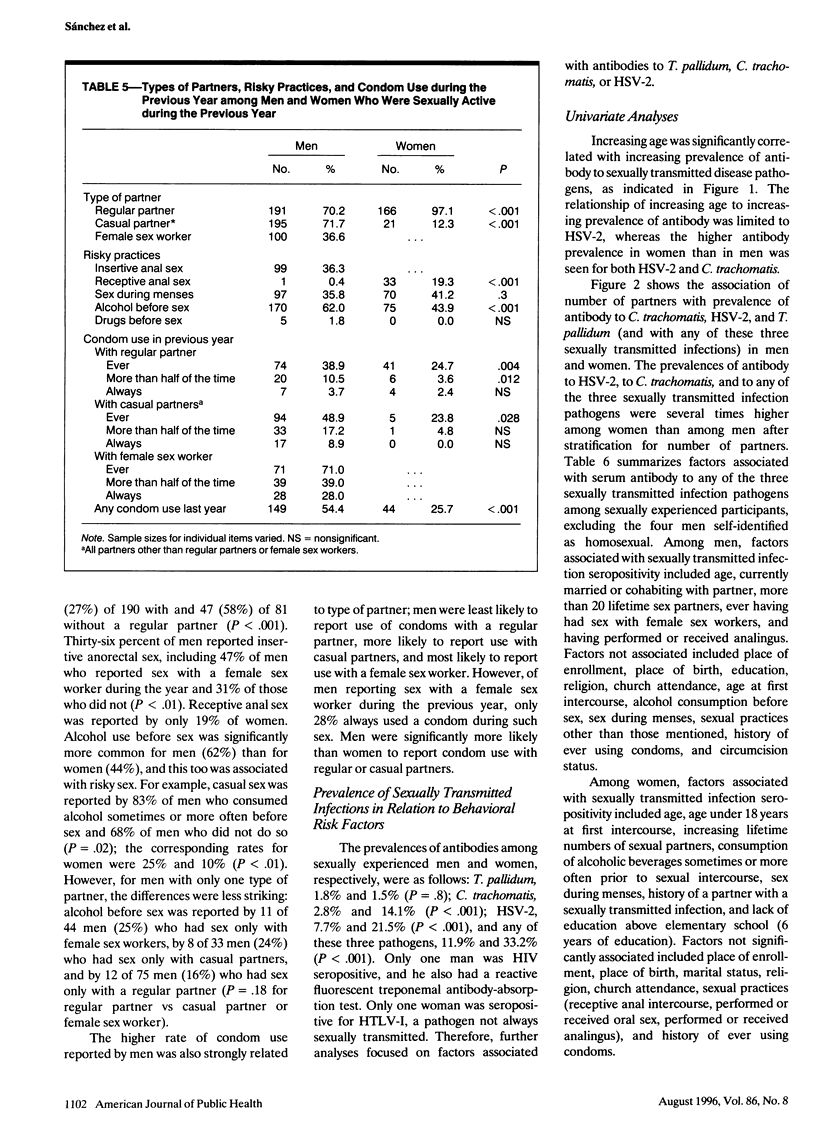
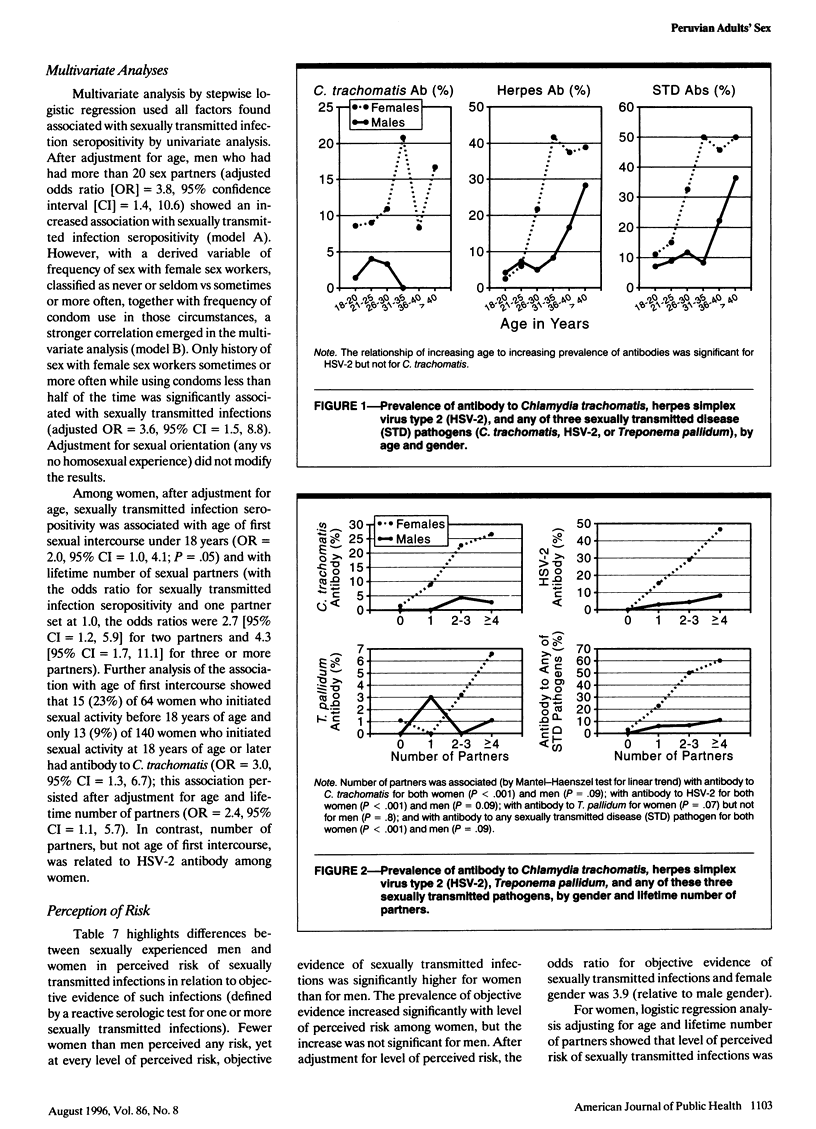

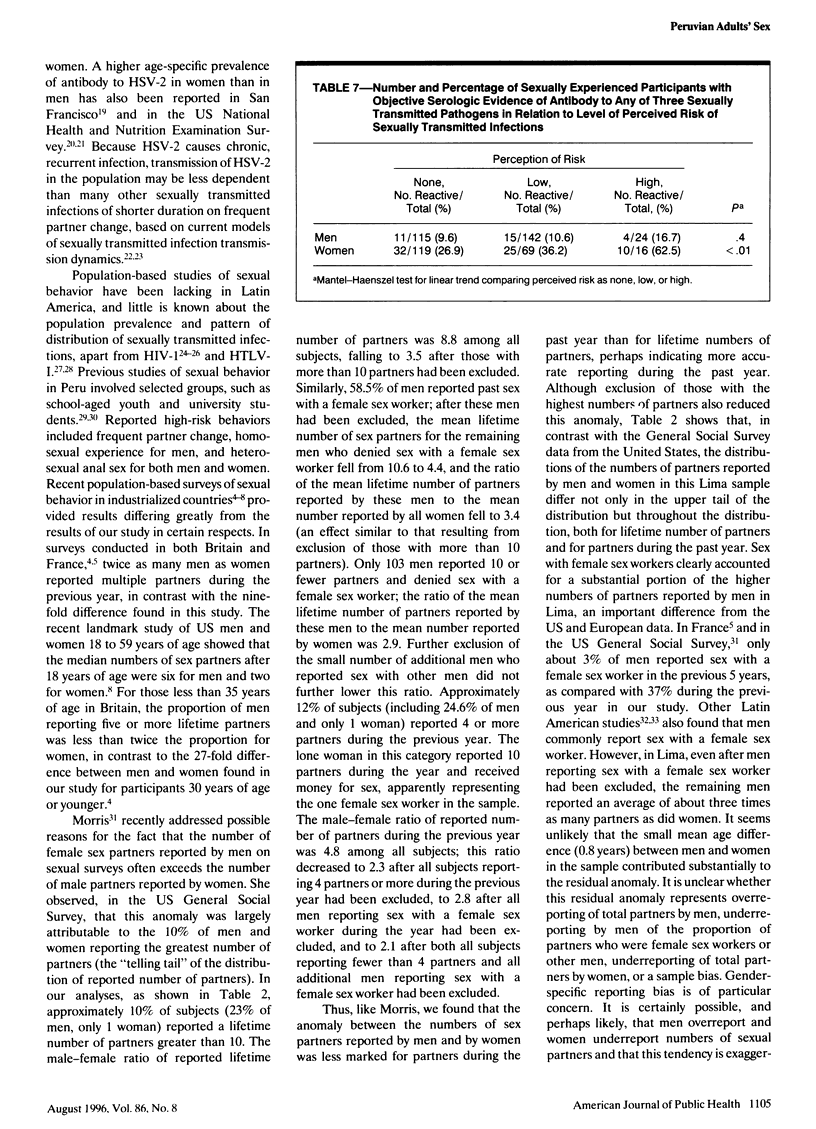
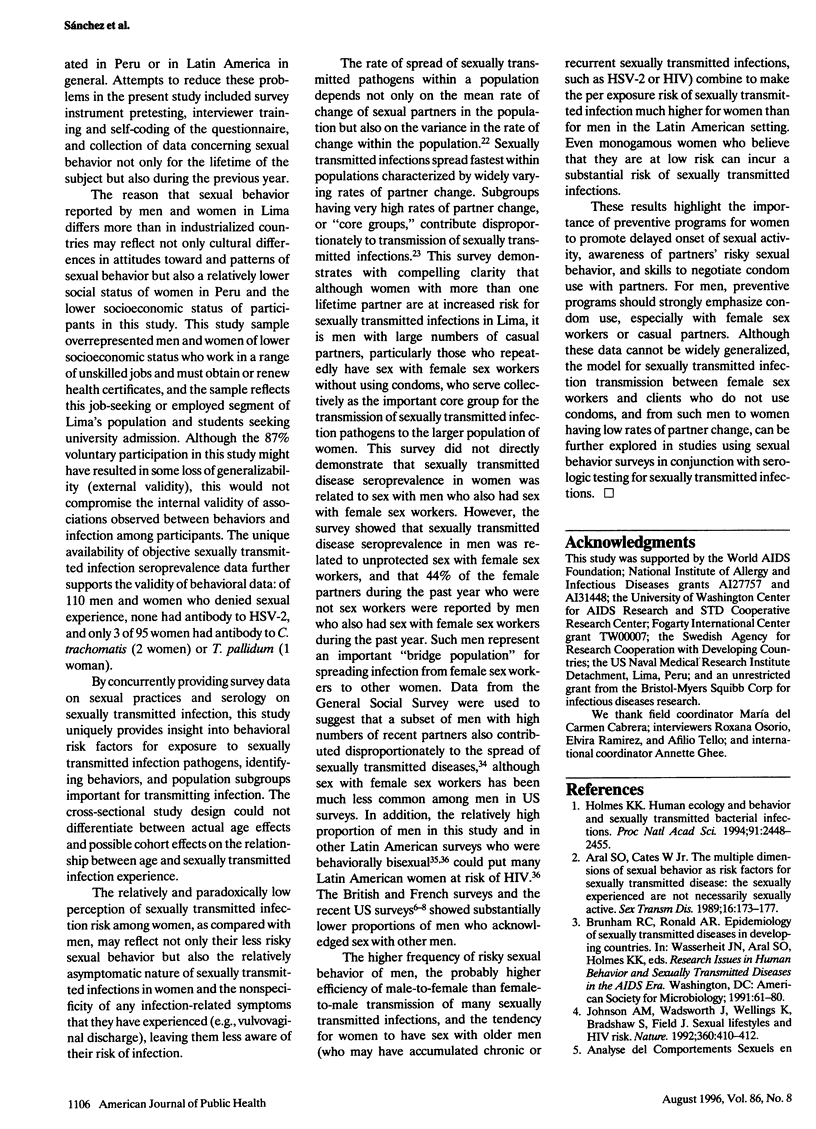
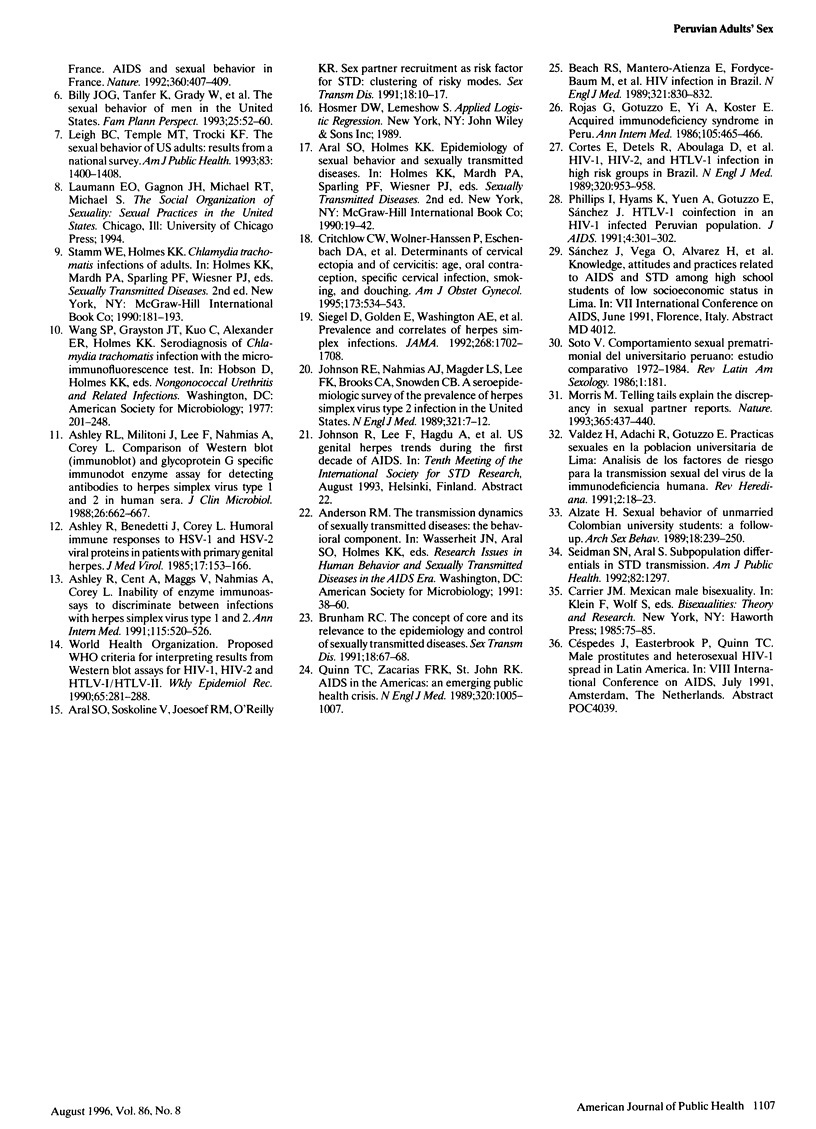
Selected References
These references are in PubMed. This may not be the complete list of references from this article.
- Alzate H. Sexual behavior of unmarried Colombian university students: a follow-up. Arch Sex Behav. 1989 Jun;18(3):239–250. doi: 10.1007/BF01543198. [DOI] [PubMed] [Google Scholar]
- Aral S. O., Cates W., Jr The multiple dimensions of sexual behavior as risk factor for sexually transmitted disease: the sexually experienced are not necessarily sexually active. Sex Transm Dis. 1989 Oct-Dec;16(4):173–177. doi: 10.1097/00007435-198910000-00003. [DOI] [PubMed] [Google Scholar]
- Aral S. O., Soskoline V., Joesoef R. M., O'Reilly K. R. Sex partner recruitment as risk factor for STD: clustering of risky modes. Sex Transm Dis. 1991 Jan-Mar;18(1):10–17. doi: 10.1097/00007435-199101000-00003. [DOI] [PubMed] [Google Scholar]
- Ashley R. L., Militoni J., Lee F., Nahmias A., Corey L. Comparison of Western blot (immunoblot) and glycoprotein G-specific immunodot enzyme assay for detecting antibodies to herpes simplex virus types 1 and 2 in human sera. J Clin Microbiol. 1988 Apr;26(4):662–667. doi: 10.1128/jcm.26.4.662-667.1988. [DOI] [PMC free article] [PubMed] [Google Scholar]
- Ashley R., Benedetti J., Corey L. Humoral immune response to HSV-1 and HSV-2 viral proteins in patients with primary genital herpes. J Med Virol. 1985 Oct;17(2):153–166. doi: 10.1002/jmv.1890170208. [DOI] [PubMed] [Google Scholar]
- Ashley R., Cent A., Maggs V., Nahmias A., Corey L. Inability of enzyme immunoassays to discriminate between infections with herpes simplex virus types 1 and 2. Ann Intern Med. 1991 Oct 1;115(7):520–526. doi: 10.7326/0003-4819-115-7-520. [DOI] [PubMed] [Google Scholar]
- Billy J. O., Tanfer K., Grady W. R., Klepinger D. H. The sexual behavior of men in the United States. Fam Plann Perspect. 1993 Mar-Apr;25(2):52–60. [PubMed] [Google Scholar]
- Brunham R. C. The concept of core and its relevance to the epidemiology and control of sexually transmitted diseases. Sex Transm Dis. 1991 Apr-Jun;18(2):67–68. doi: 10.1097/00007435-199118020-00001. [DOI] [PubMed] [Google Scholar]
- Cortes E., Detels R., Aboulafia D., Li X. L., Moudgil T., Alam M., Bonecker C., Gonzaga A., Oyafuso L., Tondo M. HIV-1, HIV-2, and HTLV-I infection in high-risk groups in Brazil. N Engl J Med. 1989 Apr 13;320(15):953–958. doi: 10.1056/NEJM198904133201501. [DOI] [PubMed] [Google Scholar]
- Critchlow C. W., Wölner-Hanssen P., Eschenbach D. A., Kiviat N. B., Koutsky L. A., Stevens C. E., Holmes K. K. Determinants of cervical ectopia and of cervicitis: age, oral contraception, specific cervical infection, smoking, and douching. Am J Obstet Gynecol. 1995 Aug;173(2):534–543. doi: 10.1016/0002-9378(95)90279-1. [DOI] [PubMed] [Google Scholar]
- Holmes K. K. Human ecology and behavior and sexually transmitted bacterial infections. Proc Natl Acad Sci U S A. 1994 Mar 29;91(7):2448–2455. doi: 10.1073/pnas.91.7.2448. [DOI] [PMC free article] [PubMed] [Google Scholar]
- Johnson A. M., Wadsworth J., Wellings K., Bradshaw S., Field J. Sexual lifestyles and HIV risk. Nature. 1992 Dec 3;360(6403):410–412. doi: 10.1038/360410a0. [DOI] [PubMed] [Google Scholar]
- Johnson R. E., Nahmias A. J., Magder L. S., Lee F. K., Brooks C. A., Snowden C. B. A seroepidemiologic survey of the prevalence of herpes simplex virus type 2 infection in the United States. N Engl J Med. 1989 Jul 6;321(1):7–12. doi: 10.1056/NEJM198907063210102. [DOI] [PubMed] [Google Scholar]
- Leigh B. C., Temple M. T., Trocki K. F. The sexual behavior of US adults: results from a national survey. Am J Public Health. 1993 Oct;83(10):1400–1408. doi: 10.2105/ajph.83.10.1400. [DOI] [PMC free article] [PubMed] [Google Scholar]
- Morris M. Telling tails explain the discrepancy in sexual partner reports. Nature. 1993 Sep 30;365(6445):437–440. doi: 10.1038/365437a0. [DOI] [PubMed] [Google Scholar]
- Phillips I., Hyams K. C., Wignall F. S., Moran A. Y., Gotuzzo E., Sanchez J., Roberts C. R. HTLV-I coninfection in a HIV-1-infected Peruvian population. J Acquir Immune Defic Syndr. 1991;4(3):301–302. [PubMed] [Google Scholar]
- Quinn T. C., Zacarias F. R., St John R. K. AIDS in the Americas: an emerging public health crises. N Engl J Med. 1989 Apr 13;320(15):1005–1007. doi: 10.1056/NEJM198904133201509. [DOI] [PubMed] [Google Scholar]
- Rojas G., Gotuzzo E., Yi A., Koster F. Acquired immunodeficiency syndrome in Peru. Ann Intern Med. 1986 Sep;105(3):465–466. doi: 10.7326/0003-4819-105-3-465_2. [DOI] [PubMed] [Google Scholar]
- Seidman S. N., Aral S. Subpopulation differentials in STD transmission. Am J Public Health. 1992 Sep;82(9):1297–1297. doi: 10.2105/ajph.82.9.1297. [DOI] [PMC free article] [PubMed] [Google Scholar]
- Siegel D., Golden E., Washington A. E., Morse S. A., Fullilove M. T., Catania J. A., Marin B., Hulley S. B. Prevalence and correlates of herpes simplex infections. The population-based AIDS in Multiethnic Neighborhoods Study. JAMA. 1992 Oct 7;268(13):1702–1708. [PubMed] [Google Scholar]


